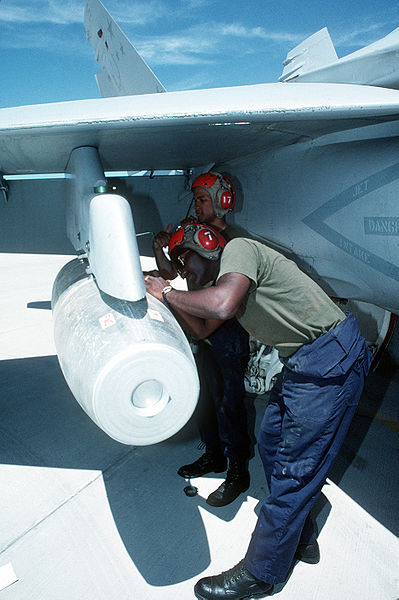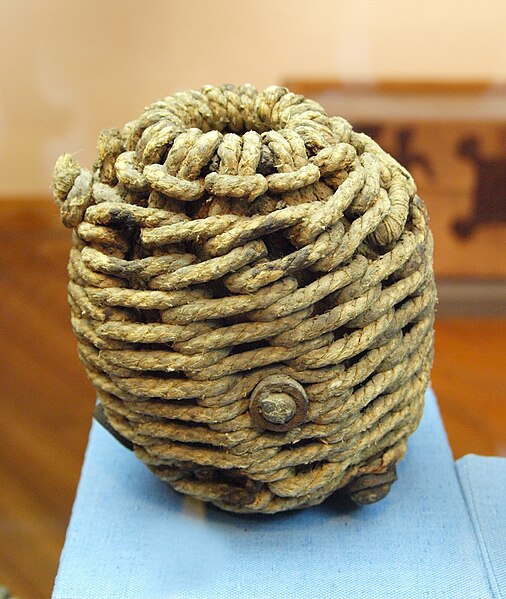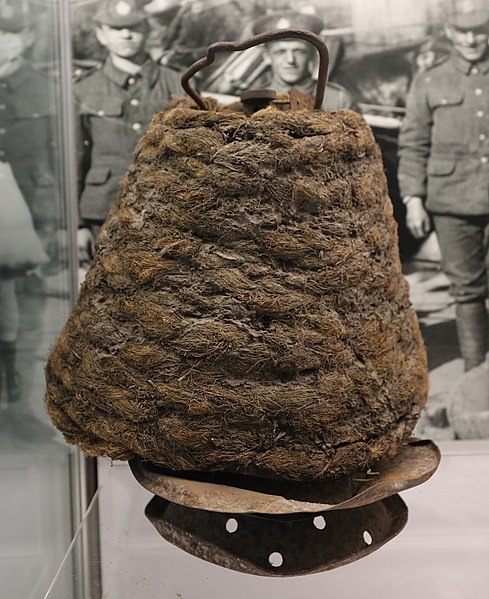A flamethrower is a ranged incendiary device designed to project a controllable jet of fire. First deployed by the Byzantine Empire in the 7th century AD, flamethrowers saw use in modern times during World War I, and more widely in World War II as a tactical weapon against fortifications.
A Type 93 flamethrower used by the Imperial Japanese Army, drawing made for the US Military Intelligence Service
German Brandkommando (burning detachment) destroying Warsaw during the planned destruction of the city
Army War Show November 27, 1942
Boeotian flame thrower (model), Thessaloniki Science Center and Technology Museum
Incendiary weapons, incendiary devices, incendiary munitions, or incendiary bombs are weapons designed to start fires or destroy sensitive equipment using fire, using materials such as napalm, thermite, magnesium powder, chlorine trifluoride, or white phosphorus. Though colloquially often known as bombs, they are not explosives but in fact are designed to slow the process of chemical reactions and use ignition rather than detonation to start or maintain the reaction. Napalm, for example, is petroleum especially thickened with certain chemicals into a 'gel' to slow, but not stop, combustion, releasing energy over a longer time than an explosive device. In the case of napalm, the gel adheres to surfaces and resists suppression.
Mark 77 napalm bomb is loaded in a June 1993 training exercise onto a US Marine Strike Fighter Squadron F/A-18A Hornet aircraft
A 17th century fire or light ball from Veste Coburg, Germany
An incendiary bomb dropped on Southend-on-Sea in 1916
A German World War II 1 kg incendiary bomb








